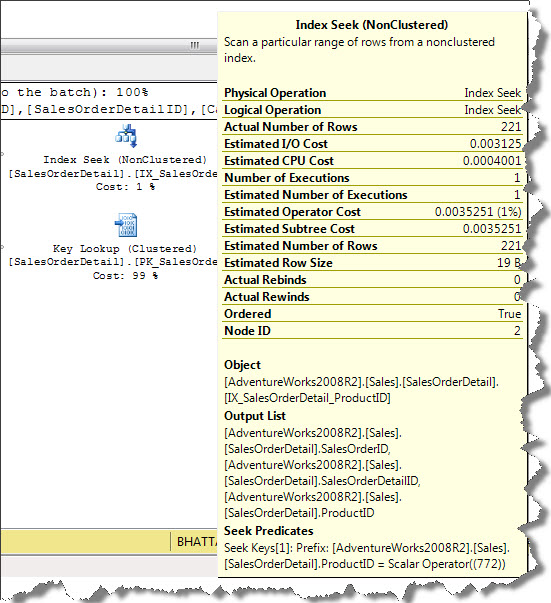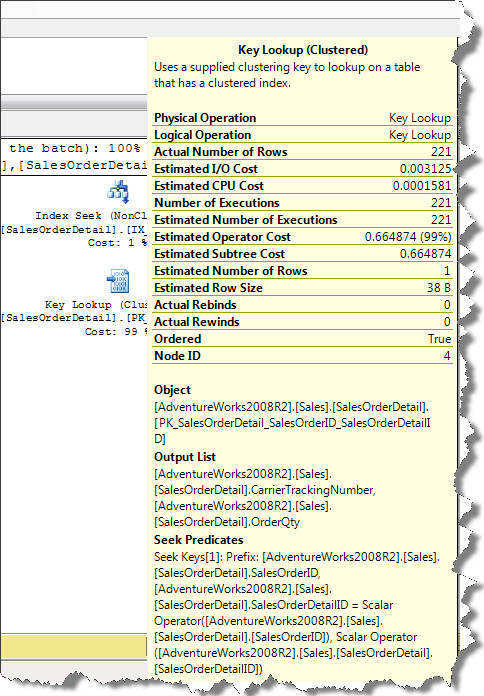Dear Friends,
If you are reading this post before Part1 and Part2 ; I would recommend you to please read them first where I discussed on Clustered Index Scan, Clustered Index Seek and Non-clustered Index Seek to have better understanding on the SQL Server Execution Plan series.
Ok, today we will cover up following operators;
- Key LookUp
- Table Scan
Key LookUp
Let me modify my query that was used in Non-Clustered Index Seek as shown following, then explaining KeyLookUP;

Okay, now you get a query plan as shown below. Yes, a plan with multiple operations.


We see a Non-clustered Index Seek on IX_SalesOrderDetail_ProductID which is a Non-Unique, Non-Clustered Index. This is a non-covering index i.e. it does not contain all the columns that required to be returned by the query. This is forcing optimizer to read the index as well as read clustered index to get into all data it needs to return back. Let us now again look at the query plan once before going further;

Here, you can see that clustered key PK_SalesOrderDetail_SalesOrderID_SalesOrderDetailID used to return desired result-set. To explain further, Key lookups are book mark look ups on tables which have a cluster index defined. This is the answer to optimizer when it cannot retrieve the required rows in a single operation and had to use the clustered key to fetch intended results. This is an indication to us to start thinking covering/included index which might benefit query performance. Benefit is, covering or included index is, they will cover all the columns of each row and will be easily located in the index if defined correctly. As we talk Key lookup, this is always accompanied by Nested Loop join as seen below, this does not indicate any query performance issues, and this is just used to combine the rows of Non-Clustered Index Seek and Key look up. If we had a covering index/included defined then this wouldn’t have appeared on query plan.

Table Scan
Let me run a select statement on dbo.DatabaseLog then explain though this is simple of all.


This indicates that, required rows are returned by scanning entire table. Table scan can occur if there are no supporting indexes defined on the table and query has to iterate through each row in order to return result set. When majority of the rows to be returned from any table irrespective or not it have an index defined, it is faster for query optimizer to scan through every row then return them instead index is looked for presence of each rows. If numbers of rows are less, table scan is not a problem but if table is large, definitely it is time to sit and re-design table by defining appropriate index, re-write query so on.
Time for today friends; will be back very soon, watch out this space for more.
Regards
Kanchan Bhattacharyya
Like us on FaceBook | Follow us on Twitter | Join the fastest growing SQL Server group on FaceBook
Follow me on Twitter | Follow me on FaceBook
